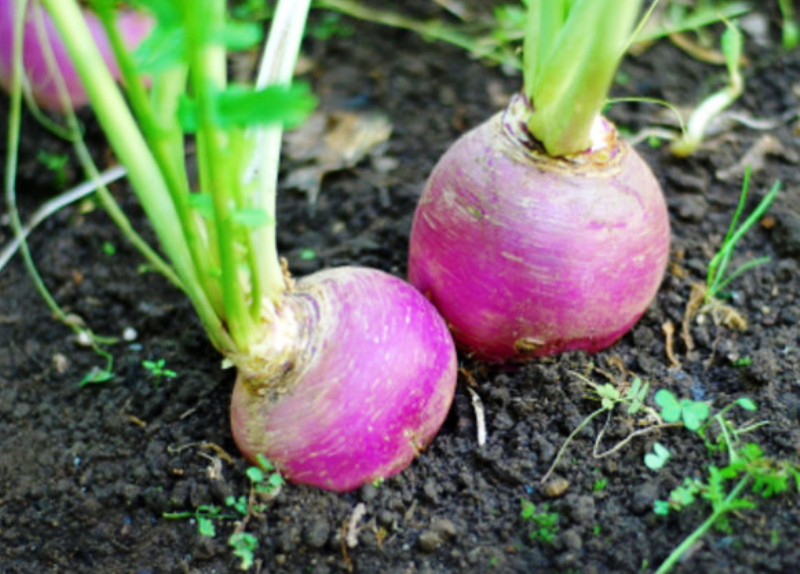
Turnips are grown worldwide and is considered as superfood, as it is rich source of vitamins like A, C, K, fibre, calcium, manganese, and folate. Turnips are also used in different forms of cooking all over the world. There are many types of turnip recipes - like it can be stewed, stir-fried, used as juice. The most common color of this healthy vegetable is white.
Turnip Facts
-
Common Name :- Turnip, Swede, Shalgam.
-
Botanical Name :- Brassica rapa.
-
Vegetable Type :- Root vegetable.
Turnip Producing states in India
The states that produce turnips include Punjab, Bihar, Himachal Pradesh, Haryana and Tamil Nadu.
Turnip Cultivation
Climate Requirements for Turnip Cultivation
-
Optimum Temperature Range :- 10 - 16 degree Celsius.
-
Around 6-8 hours of direct exposure to sunlight is required for optimum growth of the turnip plant.
-
Grows best in Cool and moist climatic conditions.
Soil Requirements
-
It can be grown in wide range of soils.
-
The best soil for its cultivation is well-drained sandy loam soils with high in Humus.
-
Too heavy soils or very light sandy soils are not suitable.
Land Preparation
-
Couple of plows are given to bring soil to fine tilth stage and weed free.
-
Soil is supplemented with appropriate well rotten farmyard manure.
-
FYM = 25 tonnes / ha.
Propagation
Turnips are basically propagated through seeds.
Sowing
-
For Asiatic Type :- July to September is best time for sowing this type of turnips.
-
For European Type :- October to December (plains) & July to september (Hills).
-
Seeds of turnip are sown directly either in ridges or line prepared during land preparation.
-
Flatbeds are used mostly for sowing.

Spacing
-
Seeds of turnip should be sown on ridges or rows at 30 cm apart.
-
Row to Row distance should be 6 to 7 cm.
-
Depth of sowing should be 1.5 cm.
-
For uniform sowing, seed should be mixed with sand.
Manures and Fertilizers used for Turnip crop
-
FYM :- 25 tonnes/ha at the time of land preparation.
-
Nitrogen :- 80 - 100 kg/ha (half doze) before sowing.
-
Phosphorous :- 50 kg/ha (full doze) before sowing.
-
Potassium :- 50 kg/ha (full doze) before sowing.
-
Left over nitrogen should be applied in two splits. One at the trime of root formation and other at the time of root knob is developed.
Irrigation
-
Irrigation should be done as soon as seed is sown in the soil and irrigation depends upon type of soil and moisture content of soil.
-
At a regular intervals of 8- 10 days irrigation should be done.
Harvesting of Turnip
-
They are ready to harvest when tender roots are uprooted with good size.
-
They are harvested, when they are 6 - 10 cm in diameter.
-
Turnips become tough and fibrous, when they are not harvested at right time.
-
Mostly, harvesting of turnips is done in evening.
Yield
An average yield of 250-400 quintals/ha can be obtained.
















